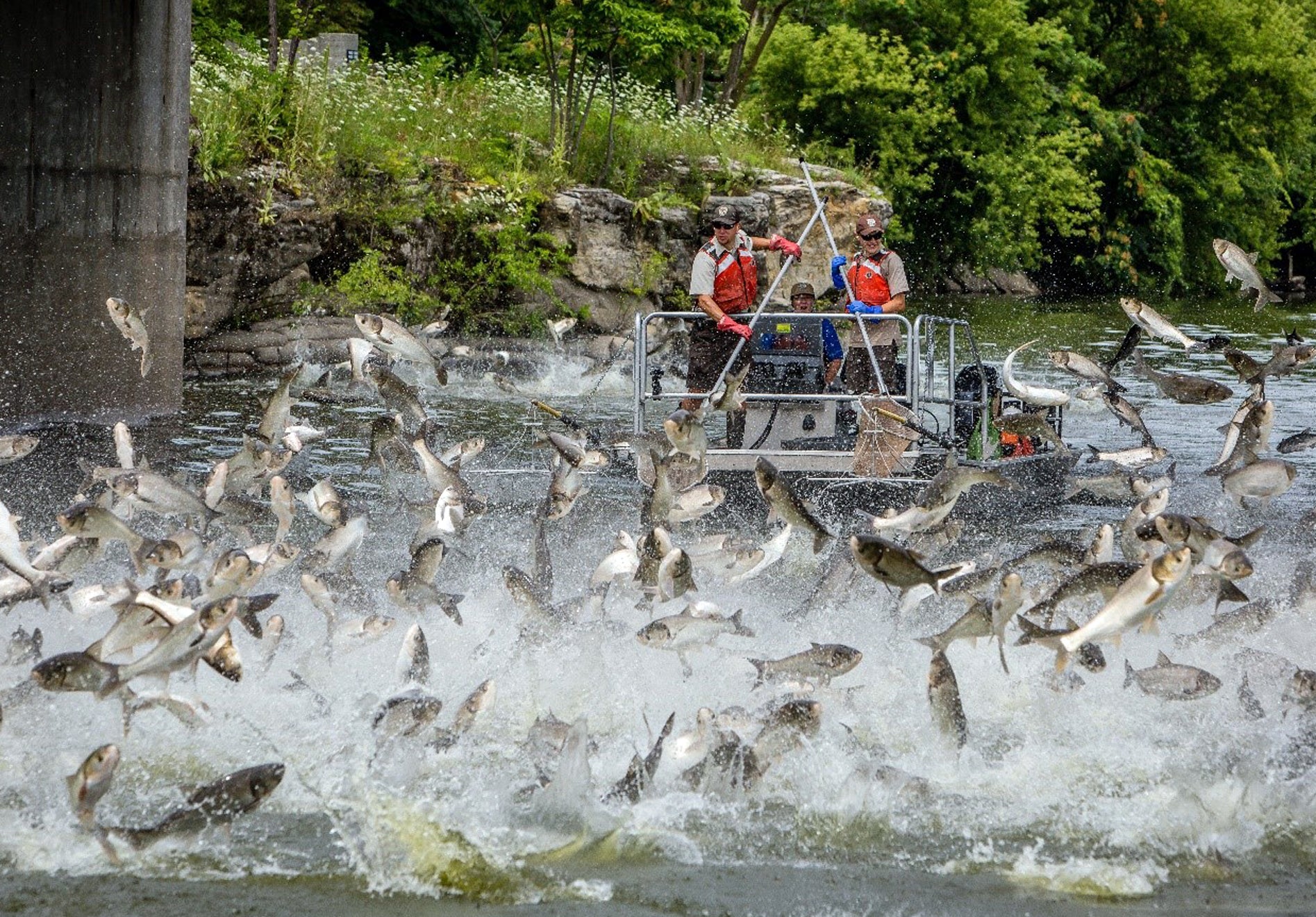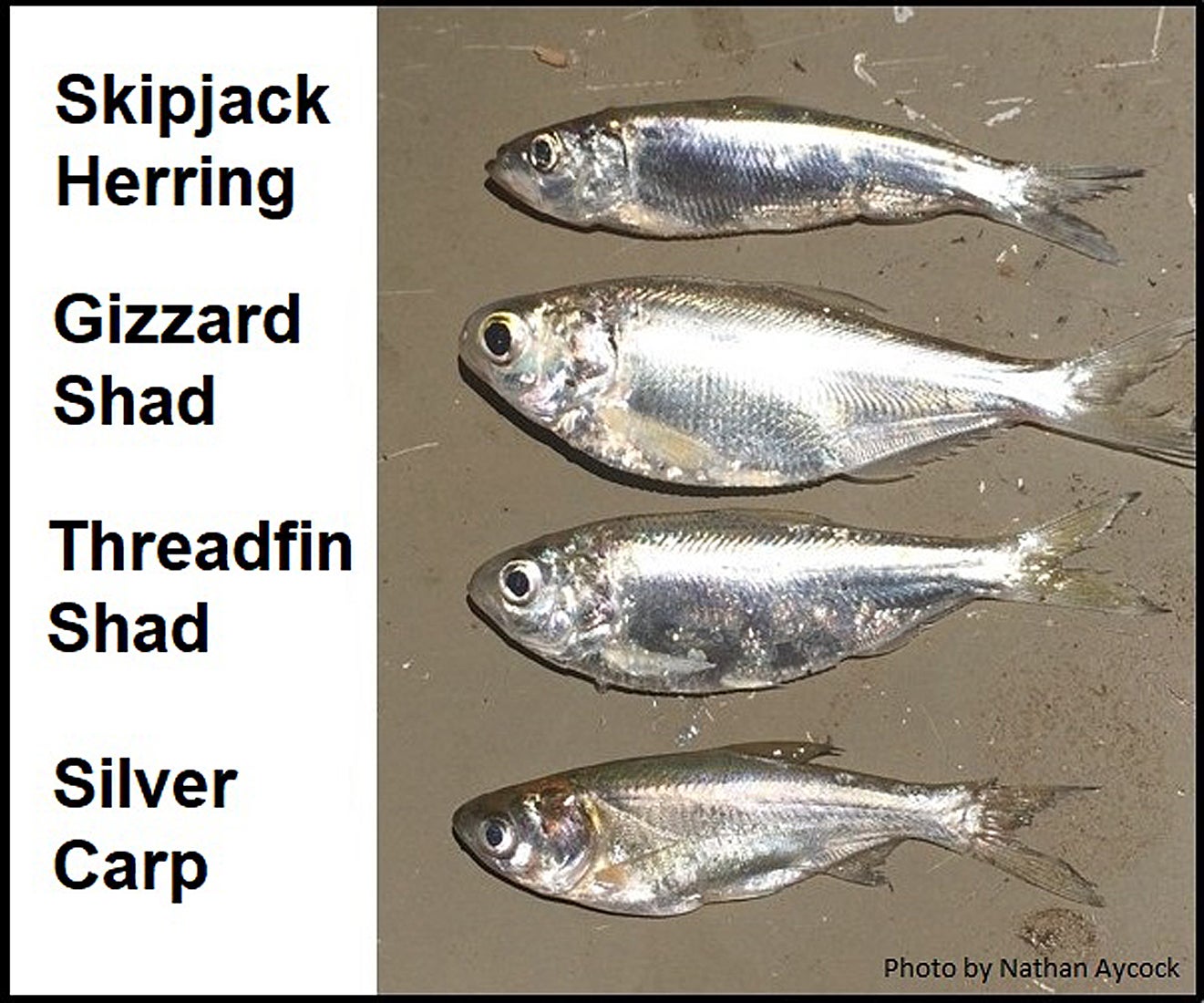By DAVID RAINER, Alabama Department of Conservation and Natural Resources (ADCNR)
Chris Greene is cautiously optimistic that an invasive fish species that can wreak havoc on reservoir ecosystems has not expanded its range in Alabama’s waterways.
The silver carp, which has done noticeable damage in Kentucky and Tennessee waterways, has been found in Alabama’s Pickwick and Wheeler reservoirs.
Thankfully, the feared spread of the fish, highlighted in numerous YouTube videos for jumping when startled by boaters, has not materialized, said Greene, Chief of Fisheries for ADCNR’s Wildlife and Freshwater Fisheries (WFF) Division. Only Pickwick has a moderately abundant population of silver carp, and Greene hopes that population stays contained to that reservoir.
“We’re relatively new to this situation,” said Greene. “Silver carp haven’t been in Alabama for very long. We’ve only had federal funding specific to Asian carp work since October of 2019, so we’re still in our first year of funding. So far, work has involved the acquisition of field gear, sampling equipment and staff training. We’re still awaiting our primary sampling boat, which we hope to get this fall and do more intense field sampling.”
When the new boat arrives, Greene said it will allow WFF personnel to target the collection of silver carp to determine population dynamics.
“We’ve been sampling with our standard shock boats,” he said. “The new boat will be more specialized with a rectangular frame and net attached to the front of the boat where you can actually trawl through the water. It will still have electrodes hanging down like a standard electrofishing boat. So, you’re moving through the water collecting carp in areas where they tend to congregate.
“It’s a learning experience. We’re learning from other states like Kentucky and Tennessee. They have been doing this a whole lot longer than us. Hopefully what we learn from them will make our sampling more effective.”
Because of the abundance of silver carp in their rivers and reservoirs, Kentucky and Tennessee rely heavily on commercial anglers to remove silver carp from their systems. Greene said those states even subsidize commercial anglers to remove silver carp to make it economically feasible.
The good news for Alabama is silver carp have had a limited range since the first one was detected in state waters about five years ago.
“Our limited field sampling has not yielded any silver carp outside of Pickwick Reservoir in Alabama,” Greene said. “From what we have been able to determine from angler catches, the farthest upstream location where silver carp have been confirmed by a commercial fisherman in Alabama is Wheeler Reservoir.
“Angler reports have been infrequent in Alabama. Most of those have come from Pickwick Reservoir. So, we believe the leading edge of where we have a moderately abundant population is Pickwick.”
Greene said WFF Fisheries encourages anglers to report any silver carp catches or sightings.
“We ask any anglers who are out on the water to let us know if they see a silver carp,” he said. “They are our eyes out there. We can’t always be on the water, so we ask anglers who see any silver carp or bighead carp, please report those to asiancarp@dcnr.alabama.gov.”
Greene asks that reports, locations and photos of silver and bighead carp be sent to that email address.
In an effort to deter the spread of the invasive fish, the Alabama Department of Conservation and Natural Resources (ADCNR) issued a new Wild Baitfish Regulation that deals with the capture of live bait in Alabama waters and restricts the movement of that bait to other water bodies.
“We enacted a regulation in Alabama to reduce the spread of Asian carp,” Greene said. “Young Asian carp closely resemble other live baitfish that are commonly used by anglers – skipjack herring, gizzard shad and threadfin shad. If we have anglers going out throwing cast nets and catching several species and taking these to other water bodies, it could increase the spread of Asian carp.”
The regulation states that if anglers catch bait on a specific body of water, that bait cannot be transported live to another body of water. It also restricts the import of live, wild-caught baitfish from other states.








